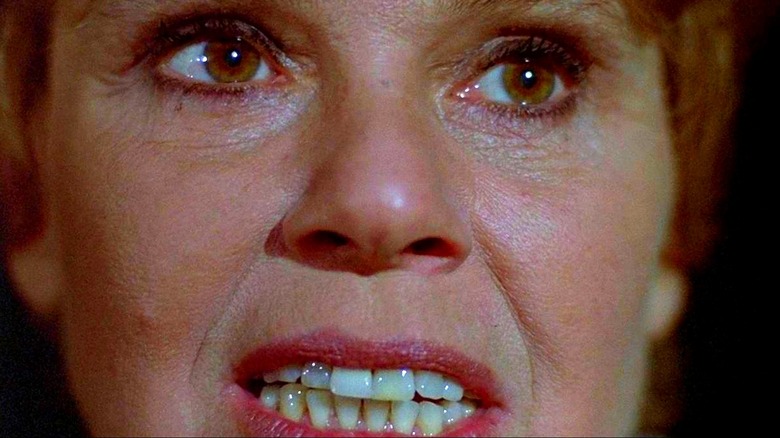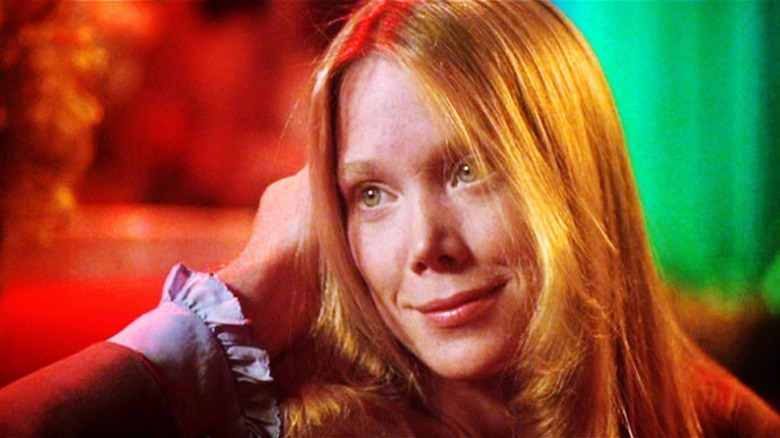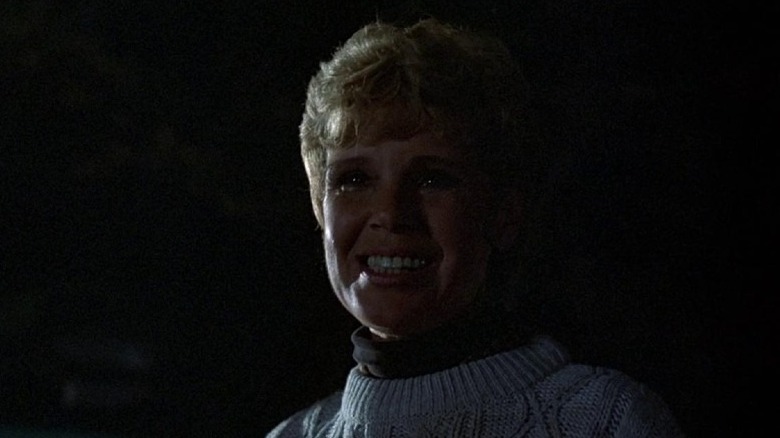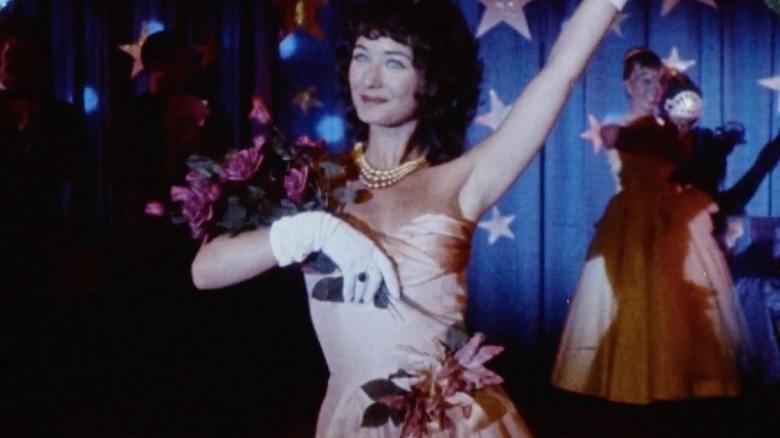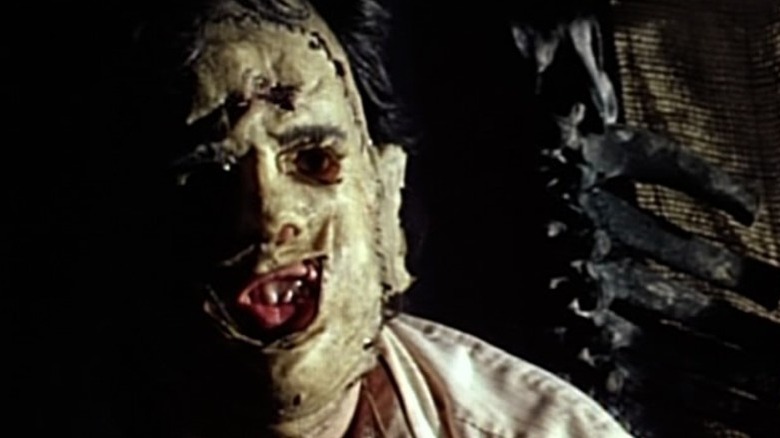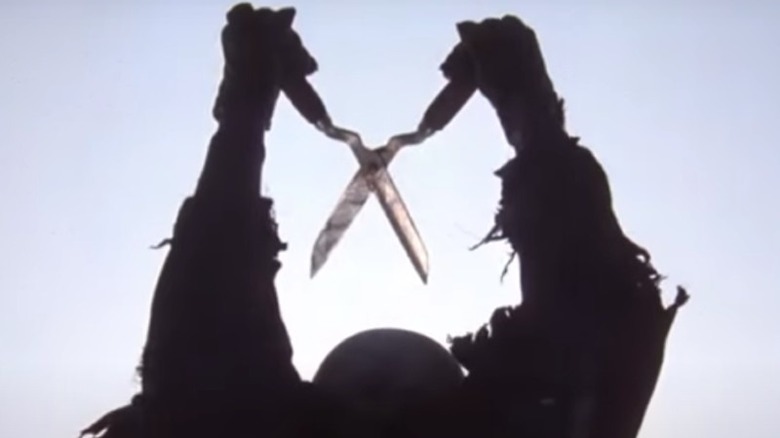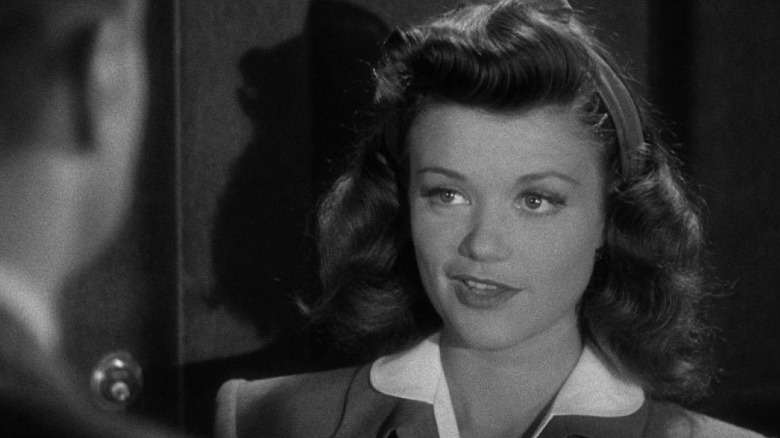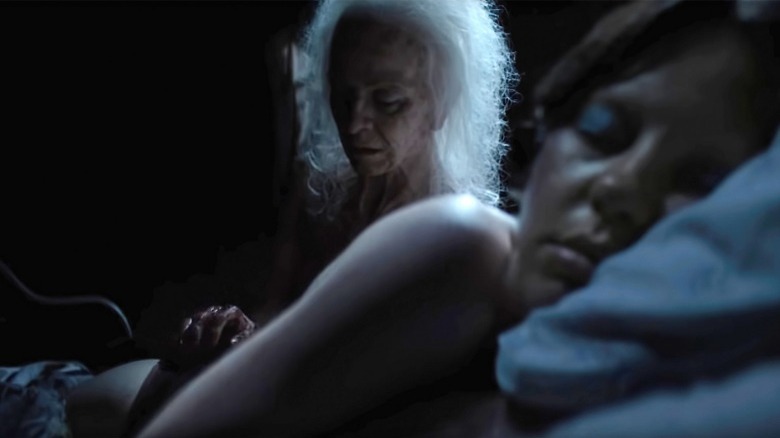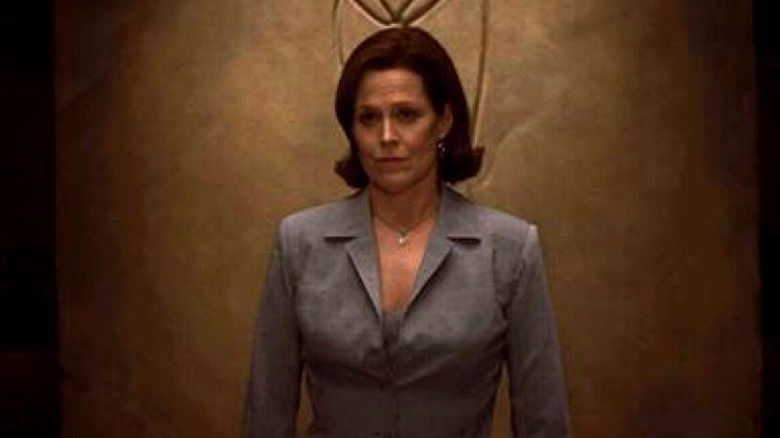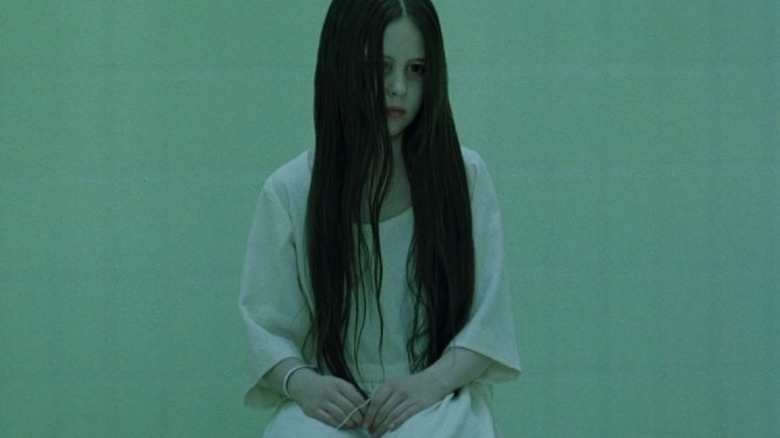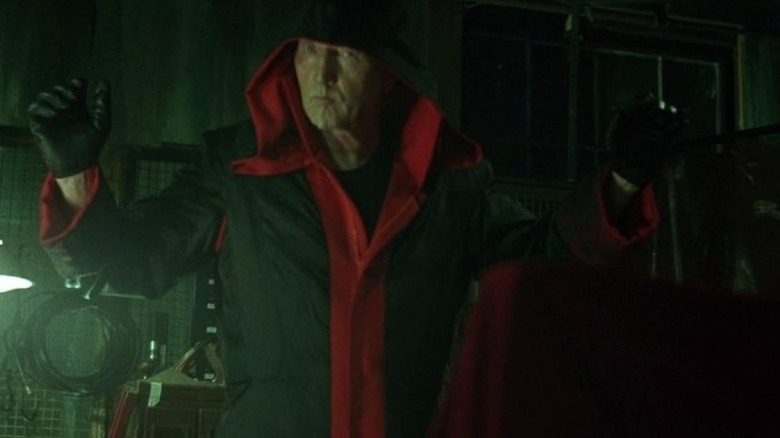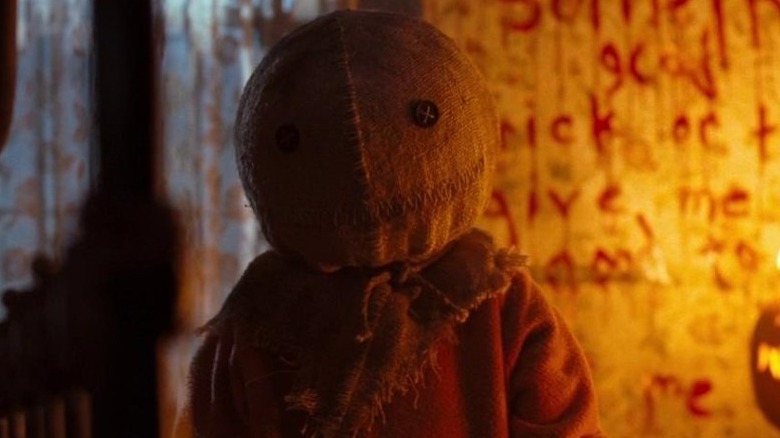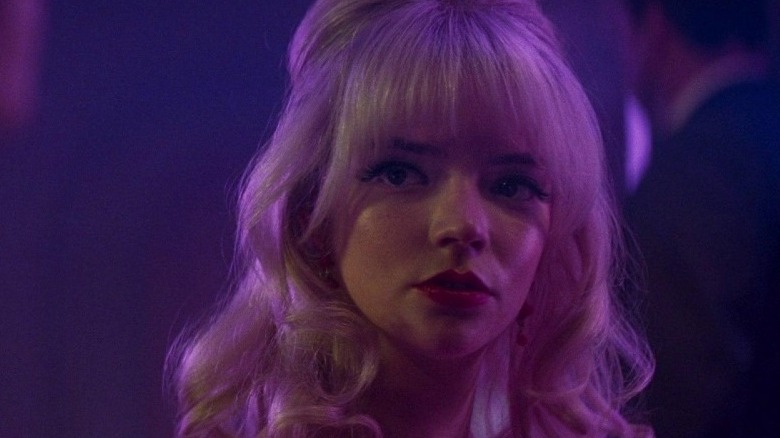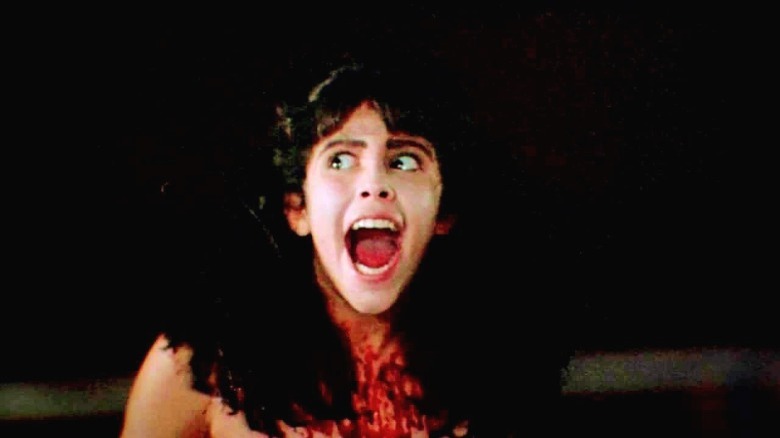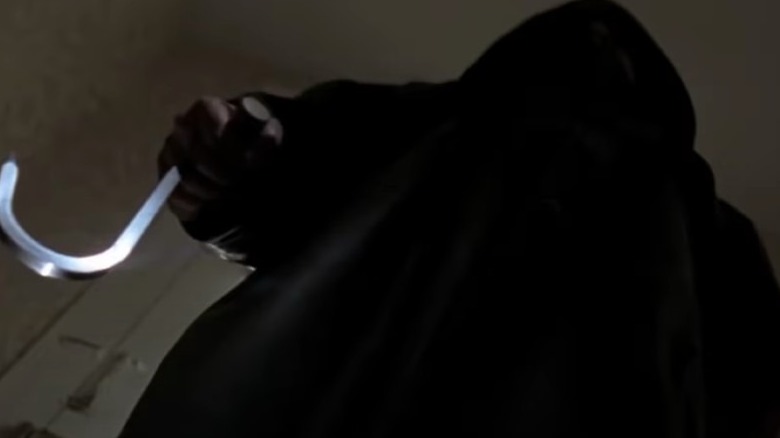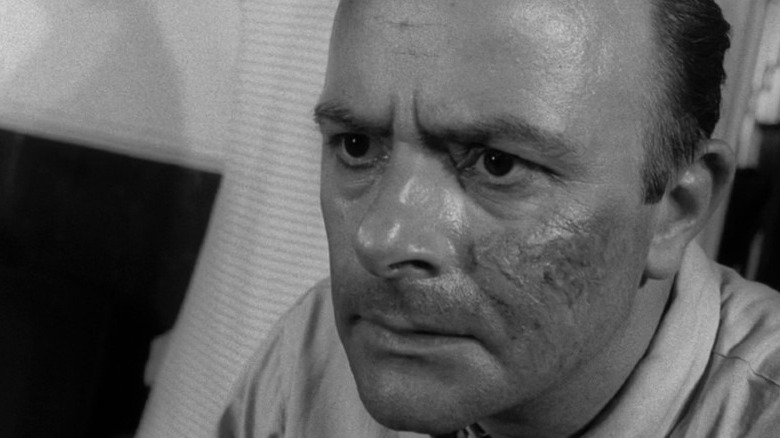Horror Villains Who Were More Right Than We Want To Admit
Horror villains are rarely worthy of our empathy. Most often, the genre's greatest transgressors are simply, unequivocally evil for no good reason, and they commit murders strictly for mayhem's sake. On occasion, however, the big baddies' evil-doing stems from deep-seated pain, trauma, and tragedy incurred earlier in their lives. These characters unleash terror upon the world as a way to achieve some sort of justice and retribution. Villains need their souls cleansed, too.
When filmmakers give their central antagonists a compelling backstory, it heightens the entire story's emotional weight. Whether we're discussing Pamela Voorhees in "Friday the 13th" or the Director in "Cabin in the Woods," some villains have good reasons for doing what they do, even if that alone doesn't totally justify their actions. Looking back through the best offerings in horror history, we've compiled a list of 15 villains who embody this idea, and to whom we should give a little credit.
Carrie in Carrie (1976)
Carrie might be the most tragic figure on this list. In 1976's "Carrie," director Brian De Palma effectively adapted the Stephen King novel and gave the story a fuller life. A hero turned antagonist, this shy wallflower does her best to live up to her mother's strict religious beliefs and navigate young womanhood. However, when Carrie's (Sissy Spacek) body starts changing, she has no one to turn to and is severely punished by everyone around her.
As she attempts to reconcile her faith with the real world, Carrie develops telekinetic powers that give her the ability to strike down a reckoning on her bullies. In the film's most iconic scene, two classmates pour a bucket of pig's blood on Carrie's plush-pink prom dress. Little do they know that they're about to unleash one of the greatest evils of all, buried deep within Carrie. In response to the prank, Carrie uses her abilities to manipulate a firehose and blast away many in the crowd, close the doors, and start a fire that consumes everyone inside.
After everything that Carrie has endured, how can you possibly blame her? She's a victim of circumstance. In a real Good for Her moment, she gives her bullies a taste of their own medicine. Too bad they don't live to see it.
Pamela Voorhees in Friday the 13th (1980)
Pamela Voorhees has nothing but love for her son. Jason was only a boy when he drowned in Crystal Lake after his camp counselors turned their backs. That tragedy fed Pamela's hunger for vengeance, and rightfully so. In the original "Friday the 13th," Pamela darts in and out of the shadows, murdering a fresh crop of unsuspecting counselors as they ready the camp for a grand re-opening.
Pamela picks them off one by one until only Alice (Adrienne King) remains. Actor Besty Palmer spins a delicious monologue in the third act, revealing Pamela's motive: "The counselors weren't paying any attention. They were making love while that young boy drowned. His name was Jason. I was working the day that it happened. Preparing meals ... here. I was the cook. Jason should've been watched. Every minute. He was ... he wasn't a very good swimmer."
Not that it justifies her actions, but it's easy to understand why Pamela turned to murder. Her rampage was all about stopping more innocent lives from being taken by, well, taking lives.
Mary Lou in Hello Mary Lou: Prom Night II (1987)
Mary Lou is a rare gem of a villain. A spiritual sequel to "Carrie," 1987's "Hello Mary Lou: Prom Night II" has nothing to do with the original "Prom Night," instead carving out its own world. In the opening scene, we meet the fiercely independent, sexually liberated Mary Lou (Lisa Schrage), who is caught between two men and fully alive in her own body. The boy she came to prom with grows increasingly jealous, and decides to get revenge by dropping a stink bomb on Mary Lou while she accepts the prom queen crown.
A fire instantly breaks out and consumes Mary Lou. The film then jumps ahead 30 years and follows a group of teens in the lead up to their very own prom night. Vicki Carpenter (Wendy Lyon) stumbles across a trove of Mary Lou's prom accessories and accidentally resurrects her spirit, allowing Mary Lou to finally get her revenge through a series of bizarre, supernatural murders.
All that Mary Lou wanted to do was have the night of her life. She deserved better, but at least her revenge was the sweetest kind.
Leatherface in The Texas Chainsaw Massacre (1974)
Leatherface wanted to live a domestic, people-free life. It wasn't his fault that strangers kept trespassing on his property and disturbing his peace, leaving him no choice but to kill them.
Tobe Hooper's 1974 film "The Texas Chainsaw Massacre," which Salon describes as a "metaphor for Nixon-era mayhem," follows a group of 20-somethings on a road trip across rural Texas. When their van breaks down, they hitchhike to a local residence for help. Naturally, they get far more than they bargained for, yet they're not completely innocent, either. First, Kirk intrudes inside the house, quickly followed by Pam and Jerry. All three are unceremoniously slaughtered in unsettling ways. Leatherface, as played by Gunnar Hansen, is visibly shaken, clearly finding the whole situation quite troubling.
Leatherface is simply protecting his property and his family, as deranged as they might be. The lesson here, kids, is this: Don't trespass, and you'll live to see another day.
Cropsy in The Burning (1981)
In horror movies, mean-spirited pranks rarely end well. When Camp Blackfoot caretaker Cropsy (Lou David) is asleep in his bunk, a group of campers sneak into his cabin and set up a worm-infested skull with candles next to his bed. Shaken out of sleep, Cropsy accidentally knocks the skull into his bed, igniting a fire. Cropsy is subsequently burned alive and left for dead.
Five years later, a group of counselors at Camp Stonewater come under attack, paying for the sins of others. Cropy's motive is pure, unadulterated revenge, even if his targets have no direct connection to his past. That doesn't make his murderous actions any less warranted, though 一 many male characters are equally as insufferable, just for different reasons.
Despite its tonal similarities to the Friday the 13th franchise, "The Burning" has a charm all its own. Everyone loves to talk about their love for Jason Voorhees, but truth be told, Cropys is the real MVP of camp-themed slashers.
Irena in Cat People (1942)
A Serbian immigrant named Irena (Simon Simone) has trouble reconciling her religion with a race of creatures known as the cat people, of which she believes she is a member. She also seeks the company of a dashing gentleman named Oliver Reed (Kent Smith), and later turns to a psychiatrist to make sense of her village's tragic past and what is lurking deep in her soul.
Initially positioned as the film's protagonist, Irena is another example of a character who's villainized by those around her. Oliver and his coworker-turned-lover Alice (Jane Randolph) quickly turn on her and report her behavior to her doctor. It doesn't help. In the third act, Irena resigns herself to an existence as a cat person and devours Dr. Louis Judd (Tom Conway).
Irena is not vicious by nature, but is rather a product of a society that demonizes those who are veer from the heteronormative standard. Many reassessments of "Cat People" through the years have dissected itsvery queer underpinnings, especially since the film arrived in the height of Hollywood's Hays Cod. Irena's fate is a tragic one, and underscores how irrefutably justified her actions are.
Pearl in X (2022)
"One day, we're going to be too old to f***," Brittany Snow's character, Bobby-Lynne, says in Ti West's horny slasher "X." The film, released to great acclaim in early 2022, takes the classic '70s-set slasher film and gives it a shiny new veneer. When a group of young filmmakers set out for rural Texas to make a porno, they spend a night on a secluded ranch owned by an elderly couple, Pearl and her husband, Howard.
Sexually frustrated, Pearl longs for the days in the early 1900s before the first world war. In a quiet conversation with porn star Maxine (Mia Goth), she reveals that she once had dreams of becoming a dancer, but life had other plans. Howard served in both wars, and over time the couple lost both themselves and also their connection to one another.
In "X," it's implied that Pearl and Howard have a history of murdering travelers and dumping their bodies in the pond behind their property. On the surface, their actions are unconscionable, but director Ti West peppers the film with various conversations about the weight of getting older and how the body eventually erodes away. It's only then that you begin to understand that Pearl is not totally wrong. All she wants it to feel loved and have a little sex. Don't we all?
The Director in Cabin in the Woods (2011)
Drew Goddard's "Cabin in the Woods" is as meta as it gets (outside of "Scream," of course). With nods to "Friday the 13th" and "The Evil Dead," the 2011 film follows a group of college kids on a weekend getaway to a cabin tucked away in the mountains. Disregarding warnings from the resident harbinger of doom, they spend a night at the location and wind up stuck in an intricate blood sacrifice.
At an underground laboratory, a group of engineers prepare their latest ritual, which centers around reenacting terrifying horror movie staples as a way to offer blood to the Ancient Ones. The Director, played by Sigourney Weaver, reveals humanity's tenuous state in an epic final monologue: Existence will only continue if a group of young people dies.
As she speaks, Dana (Kristen Connolly) and Marty (Fran Kranz) look on in horror. Their reaction is understandable, but so is the Director's commitment to saving the world. Is it worth killing a few innocent people if it means that the human race survives? The film leaves it up to the viewer to provide the answer 一 and it's a resounding "Yes!"
Samara in The Ring (2002)
In Gore Verbinski's "The Ring," a remake of the Hideo Nakata film of the same name, a little girl named Samara is killed by her mother. With a plastic bag over her head, she is shoved into a stone well and left to die. It's only through an eerie VHS tape found decades later that her story is told; however, those who watch the series of random, scattershot images don't fully comprehend what they're seeing.
Even worse, anyone who watches the tape dies seven days later. After a group of teenagers perish under mysterious circumstances, Rachel Keller (Naomi Watts) investigates both their deaths and the tape's origins. During her search, she learns about Samara's upbringing and her mother's mental illness. The inquiry eventually leads Rachel to a derelict cabin in the woods, where she discovers the well still intact beneath the floorboards.
"The Ring" is a disturbing depiction of one girl's plea for justice. Samara is only as terrifying as the story surrounding her murder; all she wanted was to be heard.
Jigsaw in Saw (2004)
There's a cruelty to the way Jigsaw teaches lessons about gratitude. Throughout the Saw franchise, John Kramer (Tobin Bell) straps his victims into elaborate physical traps and puzzles, testing their will to live and determining if they've actually learned anything from their sordid pasts. See, to free themselves, Kramer's victims must endure unimaginable pain and be willing to offer up buckets of blood and pounds of flesh. In the end, no one is untarnished.
It's only in the later sequels that we come to understand how John became this way. When he is diagnosed with terminal cancer, he pleads with his health insurance provider to consider an experimental treatment that may save his life. However, at every turn, those in positions of power fail to help Kramer, or are so blinded by their own greed that they simply do not care about his plight. So, Kramer takes his revenge. He may be a killer, but at his core, Jigsaw is really a representation of just how flawed America's healthcare and justice systems really are.
Sam in Trick 'R Treat (2007)
Step aside, Michael Myers. Sam, the face of "Trick 'R Treat," is now Halloween's official mascot. In Michael Dougherty's 2007 anthology film, the scarecrow boy played by Quinn Lord wants everyone to celebrate the spooky autumn holiday, and spreads cheer wherever he goes. His character also ties together the film's three separate stories, all of which are set in the town of Warren Valley, Ohio.
The stories, which revolve around werewolves, a kid-murdering maniac, and a tragic bus massacre, tap into the most frightening aspects of Halloween. Sam, meanwhile, wanders throughout the community and murders those who deserve it most. In the introduction, he slaughters a woman who hates Halloween so much that she yanks down holiday decor before the night is even over. Much later, he exacts revenge upon the now-retired bus driver who caused the deaths of dozens of outsider children decades prior. In other words, Sam is all of us horror-obsessed fans who have been ostracized for our love of the best genre out there.
Sandie in Last Night in Soho (2021)
"Last Night in Soho" contains one of the greatest "Good for Her" finale revelations in horror movie history. Even before we get there, however, director Edgar Wright plays with our perceptions of reality in this dazzling story, which concerns a young woman named Eloise (Thomasin McKenzie) who dreams about a real-life murder that took place in her apartment building long ago.
Every night, Eloise falls into a fantasy, set in 1960s London, and travels back through the experiences of an aspiring singer named Sandie (Anya Taylor-Joy). Eloise relives pivotal moments from Sandie's life, including Sandie's first live gig and her severe downward spiral. Sandie's so-called business manager, Jack (Matt Smith), promises that he can make her a big-time star, and entices her with the glitz and glamor of the local music scene. Instead, however, Jack exploits Sandie's desperation and forces her into a life as a sex worker.
Eloise witnesses the story in bright, flashy fragments. However, when she confronts her landlord, Miss Collins (Diana Rigg), she learns that Miss Collins is actually Sandie, and that she wasn't murdered at all. Instead, she killed countless men, then hid her abusers' bodies in the floorboards and walls. Look, as "Cell Block Tango" says, they had it comin'
Angela in Sleepaway Camp (1983)
Forced to live as another gender, Angela (Felissa Rose) releases all of her pent-up anger by murdering counselors and campers during a summertime trip to Camp Arawak. Throughout the classic 1983 film, which was written and directed by Robert Hiltzik, the viewer is only given tiny clues as to the killer's identity, as we see Angela dodging bullying from every angle.
Many of the other campers in "Sleepaway Camp" are insufferable, overly-generalized caricatures instead of actual characters, and Angela was well within her rights to murder them. When all is revealed in the very last frame — the climax of a notoriously problematic ending — Angela is perched near the lake's edge, mouth agape.
In a series of flashbacks, we learn that the real Angela actually died in a boating accident, and that her mother forced her brother, Peter, to live like a girl. Trauma such as the death of a child always has the potential to wreck someone's life, but in this case, it ruined several. Ultimately, both Peter and Angela were victims, and Peter was correct to seek retribution.
The Fisherman in I Know What You Did Last Summer (1997)
The Fisherman (Muse Watson) is out for a leisurely evening stroll when he gets hit by a convertible filled with high school students. It's the night of prom, and they have their entire lives ahead of them. So, instead of reporting the incident, they dump the body over the guardrail and drive home, hoping to bury what they've done. But the pedestrian isn't dead, and he returns the very next summer to teach the kids a lesson.
When the next summer vacation comes around, Julie (Jennifer Love Hewitt) returns home from college. She reconnects with old friends, and soon finds herself tangled in a web of murder. Those killed were all involved in the previous summer's hit and run, and the walls quickly close in around Julie. As they say, the past never stays dead.
The Fisherman's cat-and-mouse playfulness leads to some of the best moments, particularly some remarkably tense chase scenes, in all of horror. Thank goodness he has a solid motive to back all the carnage up.
Harry in Night of the Living Dead (1968)
In George A. Romero's landmark 1968 film "Night of the Living Dead," Harry (Karl Hardman) is the worst of the worst. As the dead come back to life and begin munching on the living, Harry and his family, as well as Tom (Keith Wayne) and his girlfriend Judy (Judith Ridley), take refuge inside a secluded countryside farmhouse. They are soon joined by Ben (Duane Jones) and later Barbara (Judith O'Dea). However, Harry has a chip on his shoulder, and seems to harbor some resentment towards Ben.
Early on, Harry suggests that everyone should move to the cellar and create a barricade against the swarm of zombies descending upon the property. Ben believes otherwise, claiming that they could easily become trapped if the house is overrun. The two argue, and tempers flare. Harry, his wife, and his daughter settle down below, leaving Ben, Barbara, Tom, and Judy on the main floor.
You can be a terrible person and still be right. Perhaps if Ben had followed Harry's advice, he may have survived the film's tragic ending.
